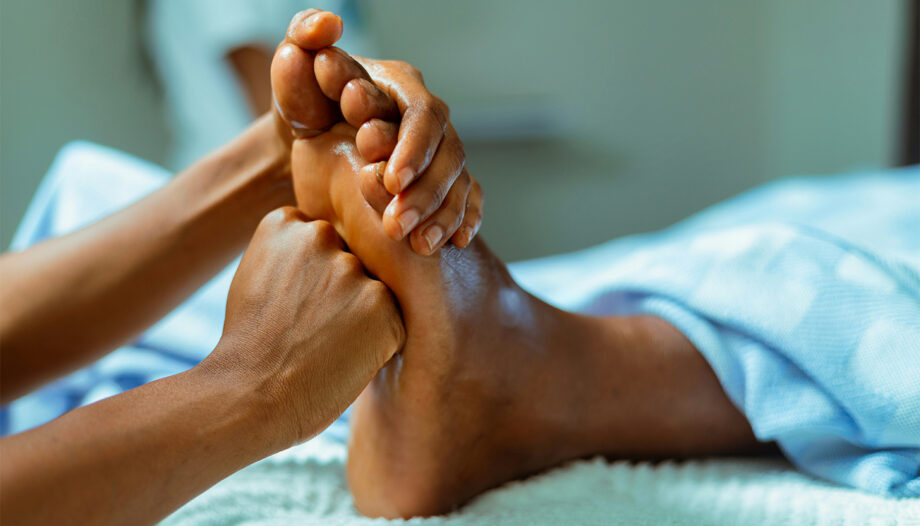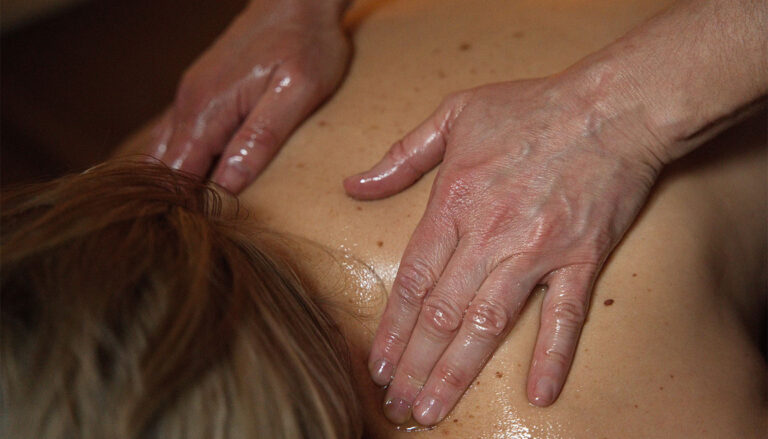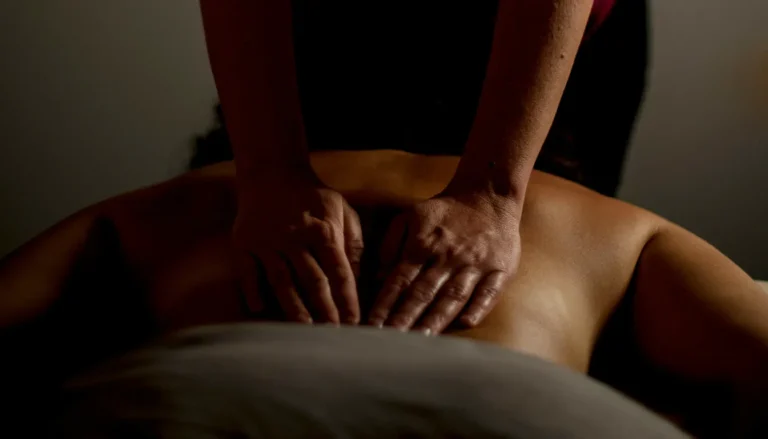Nerve damage, often linked to conditions like peripheral neuropathy, can cause discomfort in the lower limbs. Symptoms such as tingling, numbness, or sharp pain may disrupt daily life. Exploring supportive therapies, like massage therapy, could offer relief by enhancing circulation and easing tension.
Research, including a 2020 review, suggests that consistent sessions may improve blood flow, a critical factor in managing nerve-related discomfort. This approach is particularly relevant for individuals with diabetic complications or side effects from chemotherapy.
Success, however, relies on collaboration. Both therapist and client must commit fully to the process. While studies are limited, sources like Medical News Today highlight potential benefits when combined with daily self-care routines.
Key Takeaways
- Nerve damage may lead to tingling or numbness in the lower limbs.
- Improved circulation through massage could alleviate discomfort.
- Diabetic and chemotherapy-related cases may particularly benefit.
- Client-therapist commitment is essential for effective results.
- Daily self-care complements professional sessions for better outcomes.
Understanding Neuropathy and Its Impact on Legs and Feet
Living with discomfort in the lower limbs can be challenging, especially when nerve damage is the root cause. Conditions like peripheral neuropathy often lead to persistent issues, affecting mobility and quality of life. Recognising the signs early and understanding the underlying factors can make a significant difference.
What Is Neuropathy?
Neuropathy refers to damage or dysfunction of nerves, typically causing tingling, numbness, or pain. It frequently stems from diabetes, chemotherapy, or autoimmune disorders. When nerves misfire, signals between the body and brain become disrupted, leading to discomfort.
Types of Neuropathy Affecting Extremities
Several forms of neuropathy target the limbs, each with distinct characteristics:
| Type | Description | Common Causes |
|---|---|---|
| Peripheral | Affects hands and feet, causing numbness or sharp pain | Diabetes (50% of cases), infections |
| Autonomic | Disrupts involuntary functions like blood pressure | Chronic illnesses, medications |
| Focal | Sudden weakness or pain in specific areas | Nerve compression, injury |
| Proximal | Targets hips, thighs, or buttocks | Autoimmune conditions |
Common Symptoms in Legs and Feet
Recognising symptoms early helps in managing the condition effectively. Key indicators include:
- Nocturnal pain disrupting sleep
- Loss of sensation, increasing injury risks
- Slow-healing ulcers or infections
Reduced blood flow often worsens these issues, as compromised capillaries struggle to nourish nerves. Early intervention can prevent complications and improve daily comfort.
How Massage Treatment for Neuropathy in Legs and Feet Can Help
Gentle touch techniques may offer surprising relief for those struggling with nerve-related discomfort. By focusing on the extremities, these methods aim to restore balance and comfort. Let’s explore how they work.
Boosting Circulation and Easing Discomfort
Enhanced blood flow is crucial for nerve health. Manual therapy encourages oxygen and nutrient delivery, combating oxidative stress. A 2022 study noted a 30% reduction in discomfort after consistent sessions.
Key approaches include:
- Gradual pressure to avoid aggravating sensitive areas
- Focus on the soles and calves, where tension often accumulates
- Weekly 60-minute sessions, as recommended by clinical guidelines
Promoting Relaxation and Mobility
Stress exacerbates nerve sensitivity. Techniques like effleurage or kneading can:
- Lower cortisol levels by up to 25% (2020 review)
- Improve flexibility in stiff muscles
- Encourage deeper sleep, reducing nocturnal pain
What Research Reveals
Evidence supports the benefits of structured sessions. A 2020 meta-analysis highlighted:
- Improved capillary function in diabetic patients
- Better tolerance to chemotherapy-induced symptoms
“Regular manual stimulation shows promise in managing peripheral nerve discomfort.”
Effective Massage Techniques for Neuropathy Relief
Targeted manual techniques can play a pivotal role in easing nerve-related symptoms. Whether performed independently or by a specialist, these methods aim to restore comfort and function. Consistency and proper technique are key to achieving lasting results.
Self-Massage Methods for Daily Care
Simple routines can complement professional sessions. Rolling the soles over a tennis ball or chilled marbles stimulates circulation. Gentle lotion application, avoiding the *toes*, prevents fungal growth while hydrating the skin.
Try these steps for 15 minutes daily:
- Toe squeezes: Hold each digit for 5 seconds to improve flexibility.
- Ankle alphabets: Trace letters in the air to enhance range of motion.
Professional Massage Approaches
A trained therapist uses advanced methods to address deeper tissue layers. Effleurage—long, gliding strokes—soothes surface nerves. Tapotement, rhythmic tapping, invigorates dormant capillaries.
| Technique | Benefit | Frequency |
|---|---|---|
| Effleurage | Reduces surface tension | Weekly |
| Tapotement | Boosts blood flow | Bi-weekly |
Combining Massage with Range-of-Motion Exercises
Pairing manual therapy with movement maximises outcomes. Post-session ankle rotations prevent stiffness. Always ensure equipment like balls or rollers is sanitised to minimise infection risks.
“Integrating movement with manual therapy fosters nerve resilience and functional improvement.”
Potential Risks and Precautions of Massage for Neuropathy
While manual therapy offers benefits, it’s crucial to understand potential risks. Tailoring techniques to individual needs minimises adverse effects and maximises comfort. Below are key considerations to ensure safety.
Avoiding Excessive Pressure
Overzealous techniques may cause pain or worsen nerve sensitivity. Those with reduced sensation might not realise when pressure is too intense. Therapists should use gradual, gentle strokes to avoid harm.
Hypoglycemia and Infection Risks
Improved circulation can unexpectedly lower blood sugar. Insulin users should monitor levels post-session to prevent hypoglycemia. Additionally, broken skin or unsterilised tools heighten infections risks. Always:
- Sanitise equipment before use
- Avoid open wounds or cracked areas
- Check feet daily for unnoticed injuries
When to Consult a Healthcare Professional
Seek advice from a GP or specialist if:
| Situation | Action |
|---|---|
| Unexplained swelling | Immediate assessment |
| Persistent numbness | Neurological referral |
“Preventive care reduces complications by 40% in high-risk patients.”
Conclusion
Managing nerve-related discomfort requires a balanced approach. Combining massage with medical care can enhance relief and improve daily comfort. Gentle techniques, guided by professionals, help minimise risks while supporting circulation.
Consistency matters. Regular self-checks, like monitoring glucose levels and inspecting extremities, prevent complications. The American Diabetes Association highlights this as crucial for long-term management.
Adopting a holistic plan fosters resilience. Pairing manual therapy with mobility exercises and stress reduction creates sustainable results. With patience and commitment, integrating these methods can ease symptoms effectively.
FAQ
What is peripheral neuropathy?
Peripheral neuropathy refers to damage or dysfunction of the nerves outside the brain and spinal cord, often causing pain, tingling, or numbness in the legs and feet.
Can massage therapy help with diabetic peripheral neuropathy?
Yes, gentle techniques may improve circulation, reduce discomfort, and enhance relaxation, though it’s important to consult a healthcare professional first.
Are there risks to massaging feet with nerve damage?
Excessive pressure or improper techniques could worsen symptoms or cause injury, especially if skin sensitivity or infections are present.
How often should someone with neuropathy get a massage?
Frequency depends on individual needs, but starting with weekly sessions and adjusting based on symptom relief is common.
What massage techniques are safest for neuropathy?
Light strokes, kneading, and range-of-motion movements are recommended, avoiding deep pressure on sensitive areas.
Can self-massage help manage symptoms at home?
Yes, gentle rubbing or using tools like rollers may aid circulation and pain relief, but avoid overstimulating fragile tissue.
Should chemotherapy patients with neuropathy try massage?
Only under guidance from their care team, as chemotherapy can heighten skin sensitivity and infection risks.





